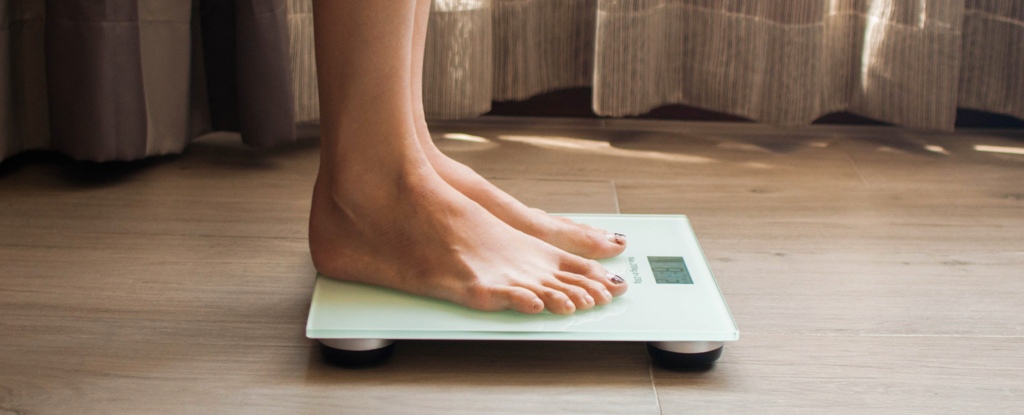Anyone who’s tried to lose weight knows these nine frustrating words: The last five pounds are the hardest to lose.
You’re about to reach your goal weight, but suddenly the scales won’t budge—even though you’re still following the same healthy diet, lifestyle, and exercise plan.
There’s a scientific basis for why it’s difficult to shed those last few pounds, called the weight loss plateau.
But before you search Google for any of those programs that promise to help you shed those last ten pounds, here’s some key information on why it’s happening and five simple things you can do to break it .
Understand the weight loss plateau
The weight loss plateau is basic biology.
When your body registers something that threatens its survival, it automatically triggers a series of physiological responses to protect against the threat.
So when we adjust our diet and reduce our calorie intake, our body registers that we’re losing weight and thinks it’s threatened. It makes adjustments to protect itself, reducing our metabolic rate and burning less energy, slowing the rate at which we lose weight.
It also secretes higher levels of an appetite hormone called ghrelin, which is known to increase hunger and promote appetite maintenance fat storage.
Research has shown that this plateau creeps in anywhere between three and six months of weight loss, and then typically weight gain occurs. So for those who need to lose a lot of weight, the plateau will be clearly visible before the last ten pounds.
A weight loss plateau can be difficult to break through. Regardless of the time frame, this is a sign that your previously successful approach to weight loss needs to change.
Here’s what you can do.
1. Rethink your weight loss goal
The first and most important thing you may need to change when hitting a weight loss plateau is your definition of a healthy weight.
Ask yourself: What is special about the weight I want to achieve?
Many people use body mass index (BMI) to determine their weight loss goal, but the number on the scale — and the score generated when you enter your weight and height into the BMI calculator — is nonsense. It doesn’t tell the whole story of what it means to be at a healthy weight.
This is because the BMI calculator lacks two other meaningful measurements: body fat percentage and body fat distribution.
If you’ve been exercising regularly as part of your weight loss plan, you’ve gained muscle or improved your muscle-to-fat ratio, and muscle is heavier than body fat, which affects the number on the scale.
You’ve also probably changed where fat is distributed on your body and reduced the amount unhealthy fat stored around the stomach, i.e. near the organs Reducing your risk of disease.
So grab that tape measure, check how your clothes fit, and think about how you’re feeling to confirm if you really need to shed those last few pounds. Work towards a waist of around 80 cm for women and around 90-94 cm for men.
2. Focus on meal size throughout the day
The current trend is intermittent fasting. This often means breakfast is the first thing off the menu to reduce calories from the diet and the amount of time you’re allowed to eat throughout the day.
But when you eat and how much you eat at each meal matters, and breakfast is the most important.
Controlled research studies have shown that this is the time when your body uses the calories best – in fact, it burns calories from a meal two and a half times more efficiently in the morning than in the evening.
Instead of shortening your eating window, fill up on your breakfast and reduce the size of your dinner.
3. Consider doing more strength-building exercises
Relying on diet alone to lose weight can reduce muscle along with body fat. This slows down your metabolism and makes it harder to maintain the weight over the long term.
Any physical activity will do a lot to maintain your muscle mass, but it’s important to fit a few days of strength-building exercises into your weekly training routine.
Bodyweight exercises — like push-ups, pull-ups, planks, and air squats — are just as effective as lifting weights at the gym.
4. Check your food intake
When you lose weight your body requires less fuel, so it’s important to review and adjust your calorie intake when you hit a weight loss plateau.
In general, you must consume 10 percent fewer calories when you drop your weight by 10 percent just to maintain the new weight. But that should not mean deprivation or starvation.
Instead, focus on an abundance of nutrient-dense foods and limit the treats and takeout to just once a week.
5. Check your stress
Stress will destroy your success in losing weight. Stress increases the body’s production of cortisol, promotes fat storage and triggers unhealthy food cravings.
The best way to manage stress is exercise. To encourage more exercise, pick up something you enjoy, no matter what it is. Make sure you add variety, however, because doing the same routine every day is a surefire way to keep you bored and avoiding activities, and it can also make it hard to reach your goals.
The final result
A weight loss plateau is frustrating and can derail your diet attempt.
Understand why the weight loss plateau is occurring, make sure the weight loss goal you set is realistic, and follow the steps above to get you back on track.
Nick FullerHead of Research Program at the Charles Perkins Center, University of Sydney
This article is republished by The conversation under a Creative Commons license. read this original article.





